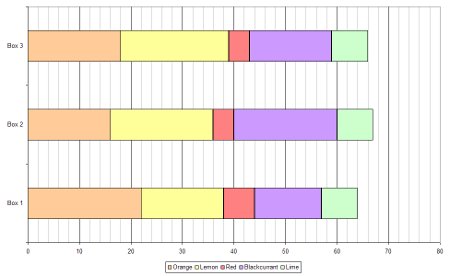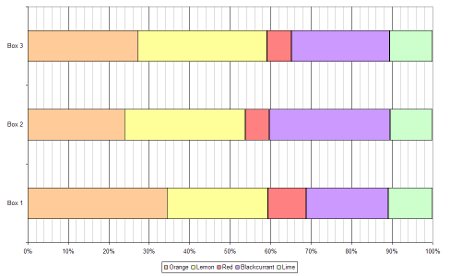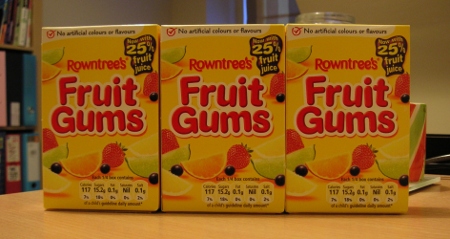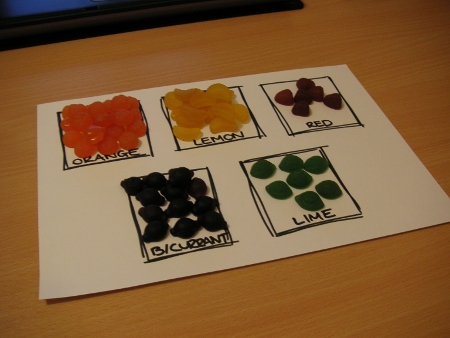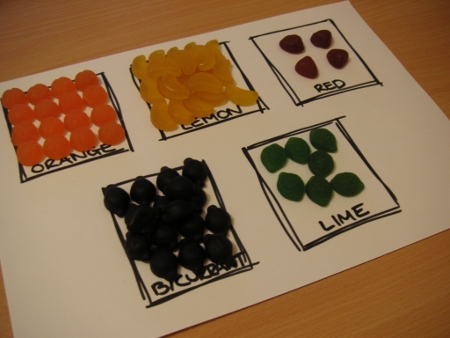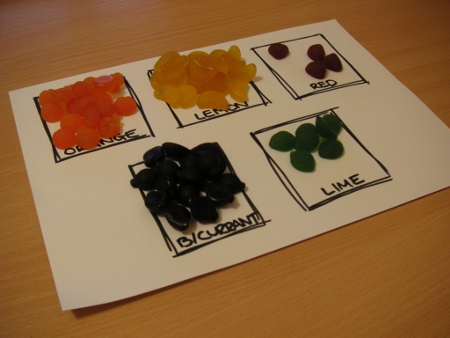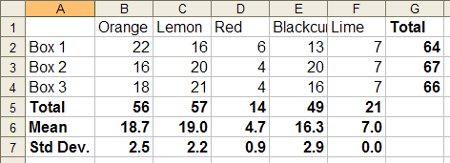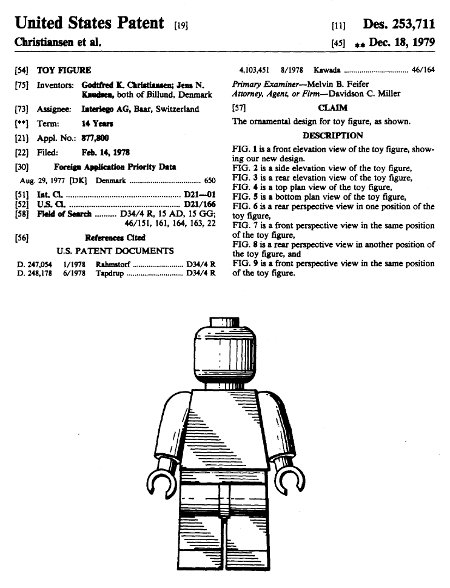All the data from my Fruit Gums experiment has one continuous variable (the number of gums) and one discrete variable variable (either box number or flavour) so the physicist’s standard graph – the x-y scatter plot – isn’t suitable. This made it a good opportunity to try out some different graph/chart types.
A pie chart shows the relative contribution of each item to the whole.

The doughnut chart builds on the pie chart by enabling more than one set of data to be plotted – in this case all three boxes at once.
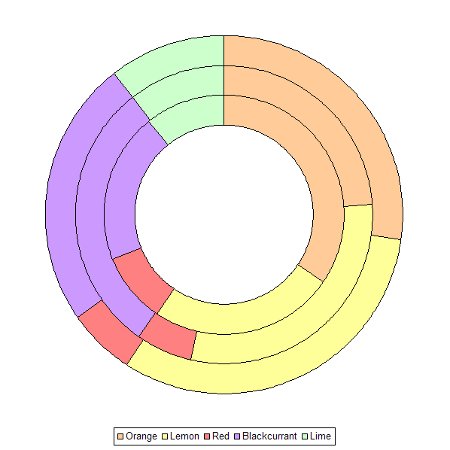
Bar charts come in two forms: horizontal and vertical. In this case there are two ways to group the bars: by flavour or by box number.
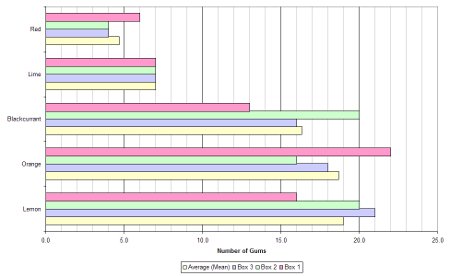
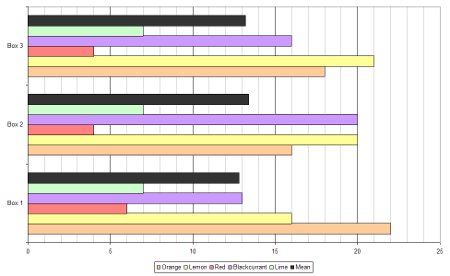
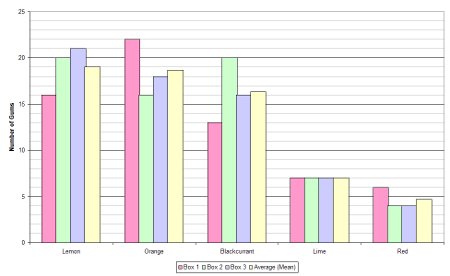
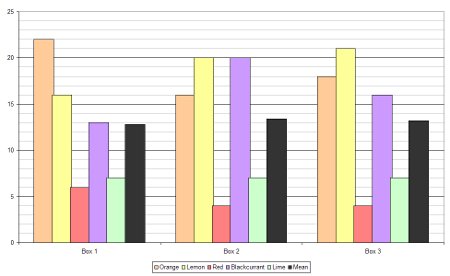
With lots of data a bar chart can become crowded and confusing and that’s where stacked bar charts become useful. A stacked bar chart overcomes this problem and can be done in two different ways: using absolute values or by percentage.
